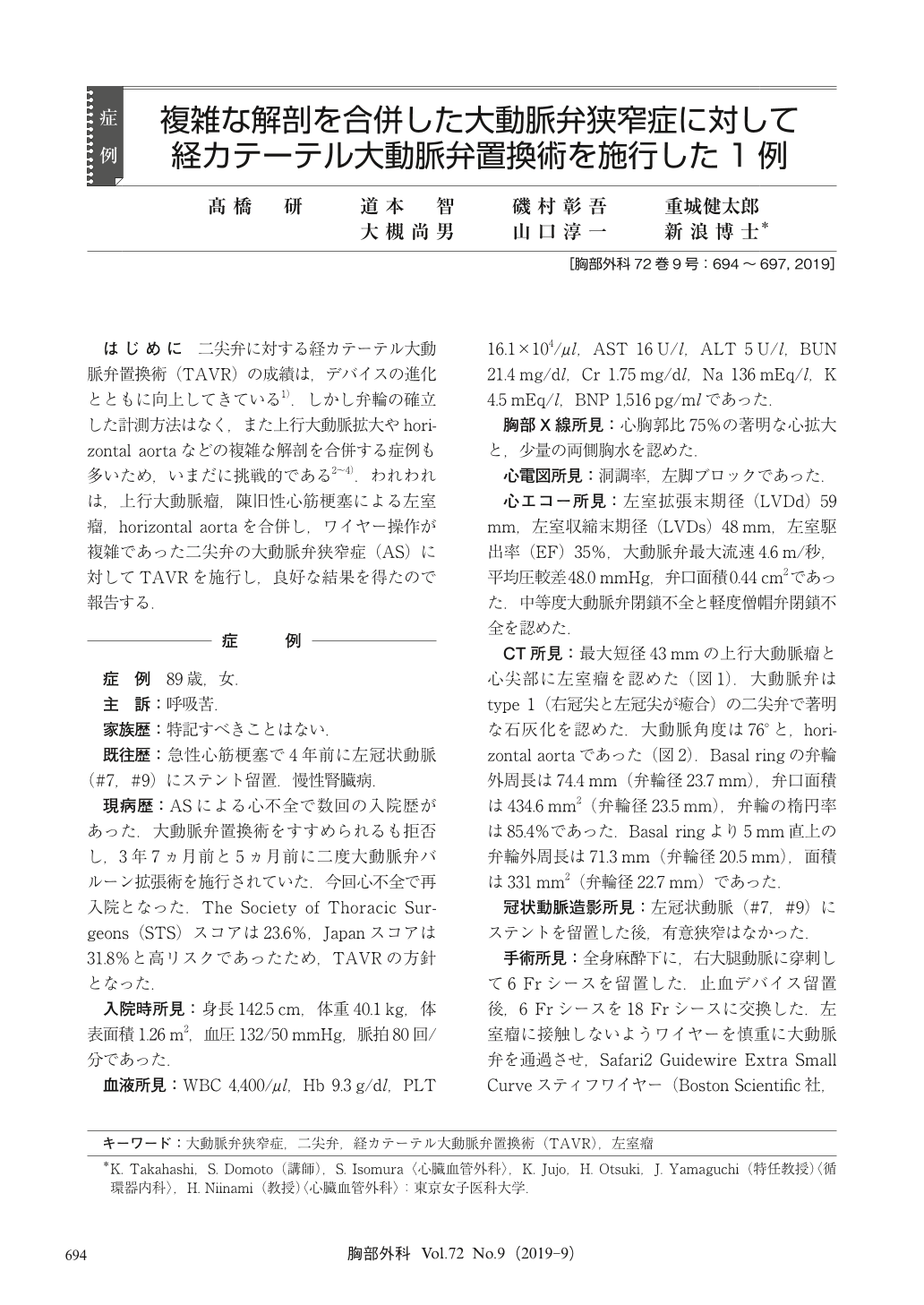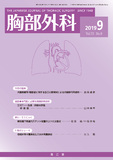Japanese
English
- 有料閲覧
- Abstract 文献概要
- 1ページ目 Look Inside
- 参考文献 Reference
はじめに 二尖弁に対する経カテーテル大動脈弁置換術(TAVR)の成績は,デバイスの進化とともに向上してきている1).しかし弁輪の確立した計測方法はなく,また上行大動脈拡大やhorizontal aortaなどの複雑な解剖を合併する症例も多いため,いまだに挑戦的である2~4).われわれは,上行大動脈瘤,陳旧性心筋梗塞による左室瘤,horizontal aortaを合併し,ワイヤー操作が複雑であった二尖弁の大動脈弁狭窄症(AS)に対してTAVRを施行し,良好な結果を得たので報告する.
An 89-year-old female was admitted with progressive dyspnea. She had history of old myocardial infarction. Echocardiography revealed severe aortic valve stenosis (AS) with bicuspid aortic valve (BAV). Computed tomography (CT) detected an ascending aortic aneurysm and a left ventricular apex aneurysm. CT confirmed the BAV with severe calcification and tight horizontal angulation. We scheduled transfemoral transcatheter aortic valve replacement (TAVR). While careful wire manipulation, the valve was successfully implanted.
BAV is frequently associated with dilation of the ascending aorta. The coexistence of an ascending aortic aneurysm would indicate surgery in order to be able to treat both lesions simultaneously and to avoid catastrophic stent-related complications, such as prosthesis dislodgment and aneurysm rupture. In the present case, there was also risk of left ventricular rupture due to wire manipulation. The horizontal aorta also complicates accurate positioning of the prosthesis during TAVR. This case highlights TAVR for AS with complicated anatomy.

© Nankodo Co., Ltd., 2019


